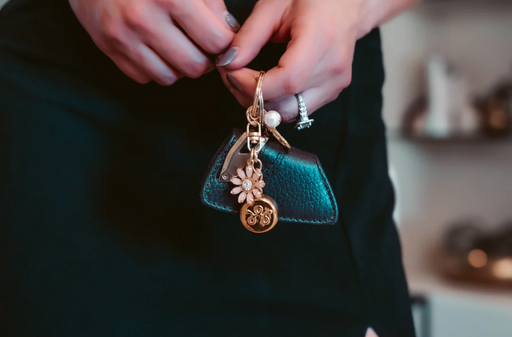
Recognizing the Signs of an Abusive Relationship
It can be difficult to identify an abusive relationship when you are in one, as the abuser often hides their behavior from the outside world. Recognizing the signs of an abusive relationship is essential for those who wish to protect themselves and seek help. In this blog post, we'll discuss some common indicators that a relationship may not be healthy.
We'll also discuss some steps you can take if you think someone you know is in an abusive relationship. By arming yourself with knowledge and understanding the signs of an abusive relationship, you can help those in need and protect yourself from becoming a victim.
What is an Abusive Relationship?
An abusive relationship is a pattern of behavior in which one partner uses power, control, and/or intimidation to manipulate or harm the other. This type of relationship can include physical and emotional abuse or sexual and financial exploitation. Abusers often use a variety of tactics—including manipulation, threats, verbal abuse, isolation, and even physical violence—to dominate and control their partners.
15 Signs of an Abusive Relationship

The signs of an abusive relationship can be hard to spot, but there are some common indicators that something is wrong. Here are some of the warning signs that might indicate you or someone you know is in an unhealthy relationship:
1) Extreme jealousy:Abusers often attempt to control their partners by exhibiting extreme jealousy. They may be suspicious of their partner's whereabouts, demand constant communication, or get angry if the partner talks with other people.
2) Verbal abuse:Verbal abuse can include the use of words to insult or belittle a partner, such as a name-calling, mocking, and shaming. It can also involve criticism, putdowns, and gaslighting. Abusers may use verbal attacks to make their partners feel isolated and insecure in order to gain control over them.
3) Isolation:Abusive partners often try to cut off their partner's access to support systems such as friends and family. They may limit their partner's ability to go out or have freedom of movement by restricting access to transportation or money. Additionally, abusers may restrict their victim's access to technology, such as taking away cell phones or preventing them from using social media sites.
4) Physical abuse:This type of abuse involves physical acts of violence that can range anywhere from pushing and shoving all the way up to hitting, punching, strangling, or even use of weapons. Physical abuse is usually accompanied by threats and intimidation in order for the abuser to maintain control over the victim.
5) Threats and intimidation:Threats are often used by abusive partners in order to keep their victims in fear of physical harm or other forms of retaliation. These threats may be directed toward pets or loved ones as a means of control and manipulation. Intimidation tactics such as destroying property or making hostile gestures can also be used by abusers in order to establish power over their partner.
6) Financial abuse:Financial abuse occurs when someone uses financial control or manipulation to maintain power and authority in a relationship. Examples of financial abuse include:
- Taking or withholding money.
- Controlling access to bank accounts.
- Denying necessary purchases.
Abusers may have sudden and unpredictable outbursts of anger or rage, followed by apologies and promises to do better. This behavior can be confusing and make it hard for the partner to know how to respond.
8) Continuous blame:The abuser will often blame their partner or others for deflecting their behavior and avoiding responsibility.
9) Unrealistic expectations:Abusers may have unreasonable expectations of their partner, expecting them to be perfect or never make a mistake. This can put enormous pressure on the victim and lead to feelings of guilt or inadequacy.
10) Emotional Abuse:Abusers may use guilt trips, manipulation, and emotional blackmail to control their partner. They may also deny their partner's emotions or belittle them to make them feel small or unworthy.
11) Sexual violence:Sexual violence is any type of unwanted sexual contact or attention. This can include verbal and physical harassment, unwanted touching, stalking, sexual coercion, and more. Examples include sexual assault, sexual harassment, or exploitation.
12) Controlling behavior:Abusers may attempt to control their partner's actions by assigning them specific tasks, monitoring their activities, or dictating how they should dress. They may also use manipulation and guilt-tripping to gain compliance.
13) Gaslighting:This psychological abuse involves manipulating facts, memories, or reality to make the partner question their judgment and mental stability.
14) Minimization:Abusers often minimize or deny the seriousness of their behavior, making excuses such as "It was just a joke" or "I didn't mean it like that."
15) Harassment:Abusers may harass their partner through stalking, phone calls, text messages, emails, or other forms of communication. They may also follow them publicly and use technology to monitor their activities.
Types of Abuse in Relationships

Abuse can take many different forms and occur in any type of relationship, such as:
Physical Abuse:Physical abuse is any act that causes physical pain, injury, or bodily harm. Examples include slapping, shoving, biting, punching, or other physical attacks.
Emotional Abuse:Emotional abuse is verbal and non-verbal behavior intended to degrade, manipulate, humiliate or isolate another person. Examples include:
- Name-calling.
- Negatively critiquing performance, threatening.
- Withholding affection or support.
- Isolating an individual from friends and family.
Sexual abuse is any unwelcome sexual contact or attention, including verbal, physical, or visual contact. Examples include:
- Coercing someone into any kind of sexual activity.
- Exposing oneself sexually to another person without their consent.
- Using threats of force to gain sexual access.
These are only some types of abuse that can occur in relationships. If you suspect that you or someone else is a victim of abuse, it's important to seek help immediately.
Things you might feel in an abusive relationship
'I'm ashamed to talk about it.'It's common to feel embarrassed, ashamed, or even guilty about the abuse you are experiencing. You may feel embarrassed to talk about it to your friends and family, worried about what they will think of you or your partner. You may even feel it's your fault, so why should anyone know about it? It's important to remember that you are not alone and that there is no shame in reaching out for help.
'I don't have anyone to turn to for help.'It can be hard to find a safe person to turn to for help, especially if the abuse has been going on for a long time. Even if you don't feel comfortable talking to your family and friends, there are still places you can turn to for help. Organizations like the National Domestic Violence Hotline are available to provide support and can connect you with resources in your area.
'I'm scared they will hurt me if I try to leave.'Leaving an abusive partner can be a scary prospect and is rarely easy. You may feel scared of what might happen if you try to leave or scared of the repercussions from your partner. It is important to remember that you are not alone, and some people can help you on your journey out of an abusive relationship. Resources are available to help you plan for safety and have a support system if you decide to leave.
'Maybe if I just try harder, things will get better.'It can be hard to accept that the abuse is not your fault and that it won't go away no matter how hard you try. It's important to remember that abuse is never ok, and it won't get better if you just try harder. The only way to stop the abuse is by getting help from a professional or leaving the relationship.
Seeking Help and Support

It can be difficult to recognize or admit that you or someone you know is in an abusive relationship. If you're concerned about your safety or someone else's safety, it's important to seek help and support from a trusted source.
If you are experiencing domestic violence in your relationship and need help, various resources are available. The National Domestic Violence Hotline [TheHotline.org or 1-(800)-788-SAFE (7233)] can provide help with creating a safety plan, finding shelters, and connecting you with local organizations that can assist.
The National Coalition Against Domestic Violence (NCADV.org) provides additional resources, tips, and support. Lastly, if you feel unsafe and in danger, contact your local police (911). They can provide assistance and access to additional resources.
About invisaWear

invisaWear is safety jewelry that is designed to help you discreetly get assistance in emergency situations. The jewelry has a hidden button on the back of it which when pressed twice can send your location to 5 emergency contacts of your choice and optionally 9-1-1.
Conclusion

Abusive relationships can be very difficult to recognize and escape from, but it's important to remember that you deserve to be treated with respect and kindness. No one should have to suffer through abuse, whether physical, emotional, or otherwise.
If you or someone you know is in an abusive relationship, it's important to seek help and support from trusted sources. You should never feel ashamed or embarrassed about the abuse you're experiencing, and you have the right to find safety and support.
By understanding what abuse is, how it can manifest, and where to turn for help, you can take the steps necessary to protect yourself or someone else from further harm.
FAQ's
What types of behaviors are considered to be abusive?Abusive behavior can be physical, psychological, sexual, financial, or emotional. Examples of abusive behavior include controlling behavior, verbal or physical threats, withholding love or affection, physical violence, and manipulation.
How can I help someone who has been abused?One of the many things you can do for someone in an abusive relationship is to listen and provide emotional support. It can be difficult for them to reach out, so try to be understanding and offer non-judgmental advice. You can also help them find a local support group or connect them with resources that can help.
What is considered mental abuse?Mental abuse occurs when someone deliberately and systematically harms another person's psychological well-being. This abuse can include verbal insults, controlling behavior, threats, withholding love or affection, and manipulating someone's feelings.
Is it possible to be in a healthy relationship and still be the only person in it?Yes, being in a healthy relationship is possible when you are the only person involved. It is important to have a healthy relationship with yourself by setting boundaries, communicating openly and honestly, and taking time for self-care.
















